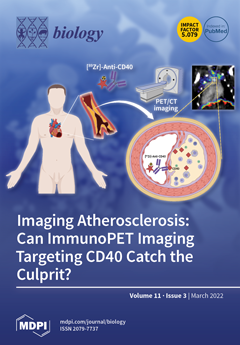The applications of nanoparticles (Nps) as food additives, health enhancers, and antimicrobials in animal production are increasing. The aim of this study was to evaluate the effect of selenium (Se) nanoparticles (Se
0Nps) stabilized with L-cysteine (Se
0Nps/L-Cys), as a nutritional
[...] Read more.
The applications of nanoparticles (Nps) as food additives, health enhancers, and antimicrobials in animal production are increasing. The aim of this study was to evaluate the effect of selenium (Se) nanoparticles (Se
0Nps) stabilized with L-cysteine (Se
0Nps/L-Cys), as a nutritional supplement, on immunological, oxidative status, and productive parameters in
O. mykiss. TEM and SEM-EDS showed the accumulation of spherical Se
0Nps entirely composed by elemental selenium (Se
0) as intracellular and extracellular deposits in
Pantoea agglomerans UC-32 strain. The in vitro antioxidant capacity of Se
0Nps/L-Cys was significant more efficient ROS scavengers than Se
0Nps and Na
2SeO
3. We also evaluate the effect of Se
0Nps/L-Cys on cell viability and oxidative stress in RTgill-W1, RTS-11, or T-PHKM
Oncorhynchus mykiss cell lines. Se
0Nps/L-Cys showed less toxic and high antioxidant activity than Se
0Nps and Na
2SeO
3. Finally, the dietary Se
0Nps/L-Cys had a significant better effect on both plasma lysozyme and respiratory burst activity (innate immune response), on tissular Gpx activity (oxidative status), and on well-being (productive parameter) of
O. mykiss when it is compared to Se
0Nps and Na
2SeO
3. Se
0Nps/L-Cys is a promising alternative for nutritional supplement for
O. mykiss with better performance than Na
2SeO
3 and Se
0Nps, ease to implementation, and reduced environmental impact.
Full article






